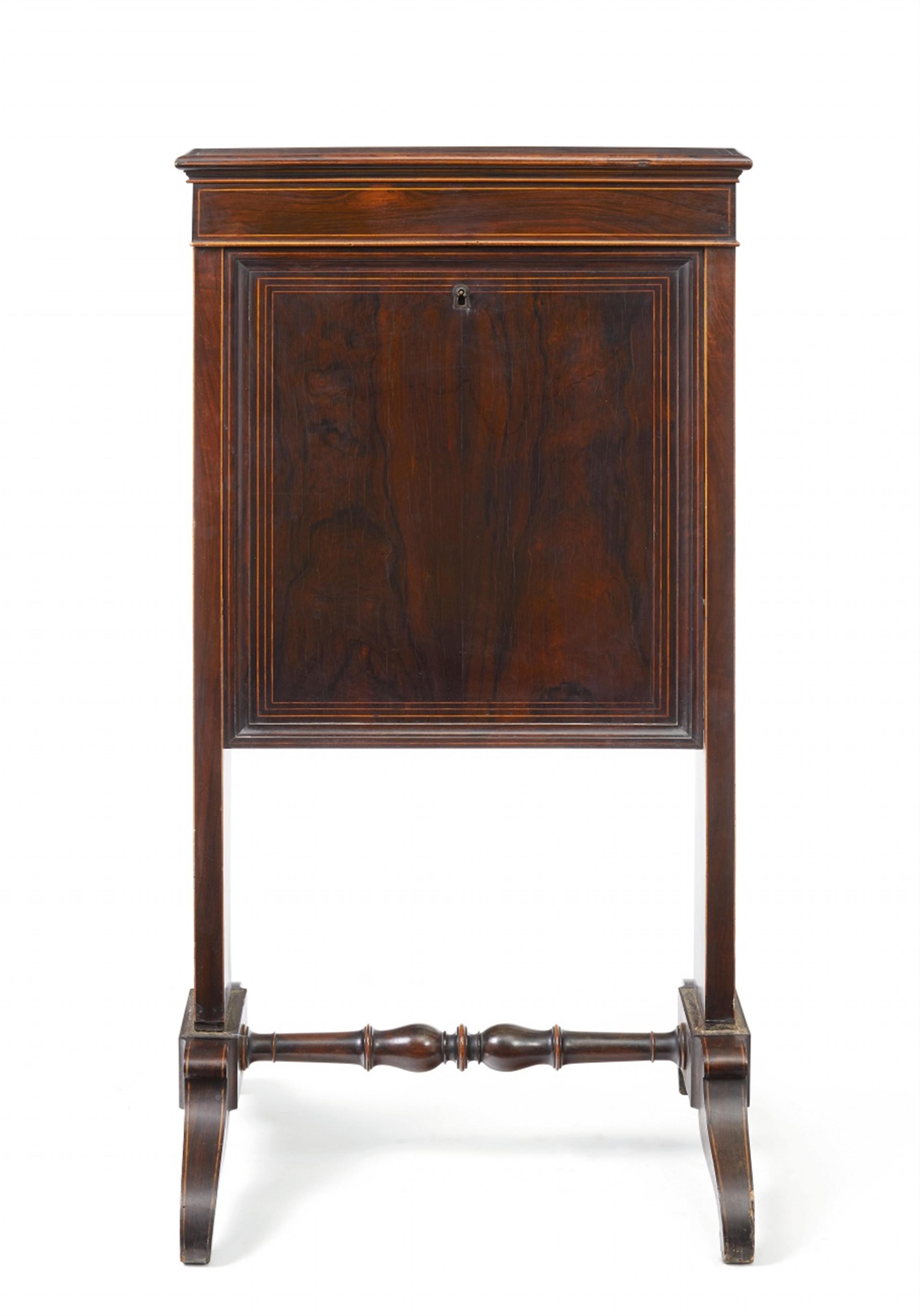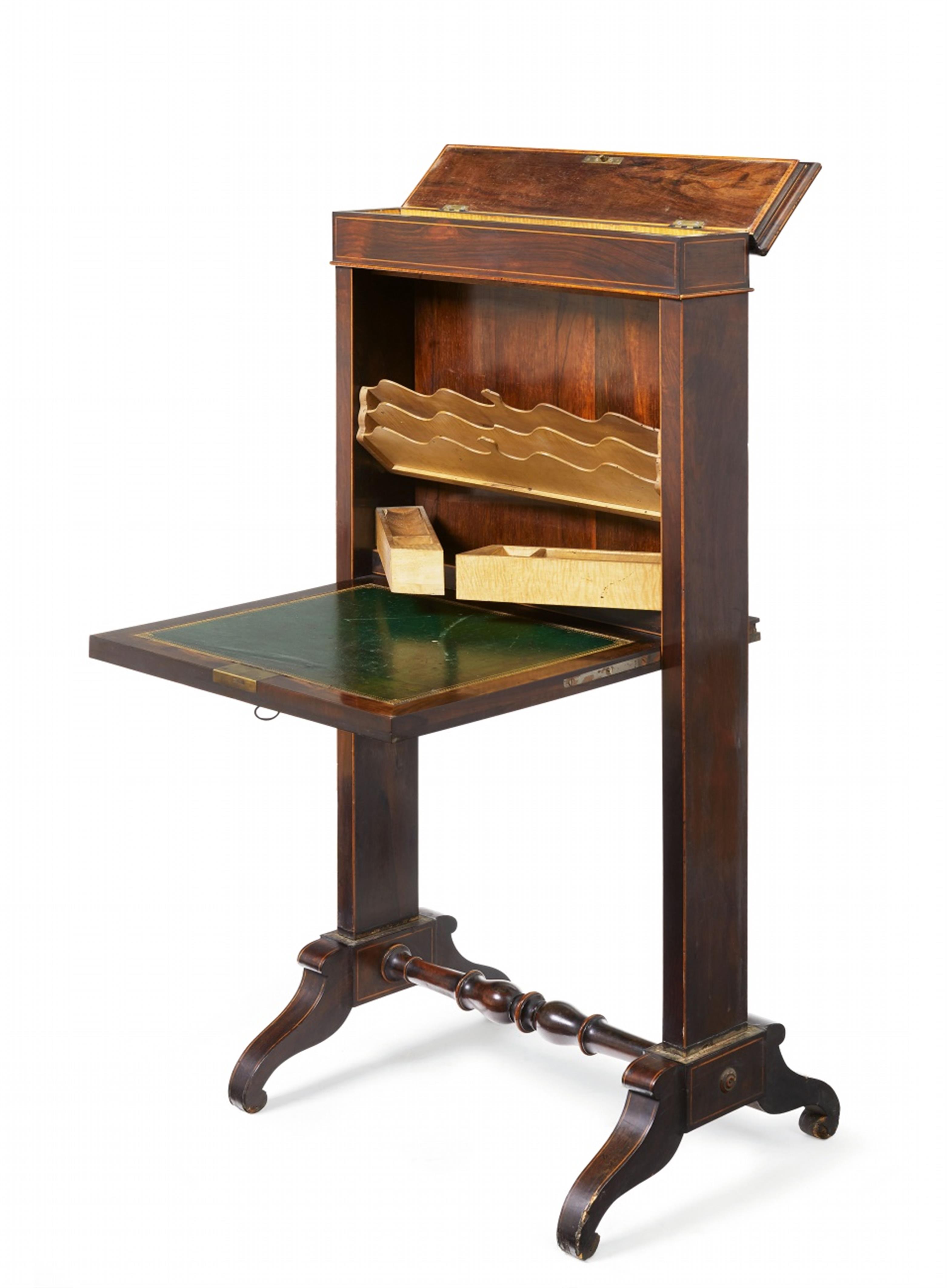A patented secretaire designed as a fire screen
Red stained veneers (possibly walnut), solid maple and maple veneer, boxwood veneer on oak and softwood, the gold embossed green leather writing surface presumably original. Fold-out writing surface, the top of the cabinet can be opened via a spring mechanism. Containing two compartments that can be swivelled forwards with holders for writing implements and ink. Above this a mobile document compartment. Some losses to the sides, a breakage to the handle of the upper drawers. H 113, W 57, D 44.5 cm.
1st third 19th C., design attributed to Karl Friedrich Schinkel.
Provenance
North German private collection.
Literature
Cf. Sievers, Karl Friedrich Schinkel Lebenswerk Die Möbel, Berlin 1950, illus. 162/3, for the design of the so-called “Aufklappbaren Kaminpults”, a drawing in the holdings of the Staatliche Kunstbibliothek Berlin (Hdz 5480). Johannes Sievers describes the piece as follows: “Seine Benutzung war in der Weise gedacht, dass der daran Schreibende seinen Platz vor dem offenen Kaminfeuer einnahm, gegen die Hitze durch die als Schirm wirkende Pultwand geschützt, aber im Stande, seine Füße unter dem Pult hindurch am Feuer zu wärmen. Eine Verbindungssprosse diente zugleich als Fußstütze.” Cf. Stiegel, Berliner Möbelkunst vom Ende des 18. bis zur Mitte des 19. Jahrhunderts, Munich-Berlin 2003, illus. 226, p. 282, for an example in Charlottenhof Palace. Achim Stiegel discovered a prime example made in 1803 in the writing chamber of Rheinsberg Palace. Adolph Friedrich Voigt, the manager of a Berlin cabinetmaking workshop, had his patent for a “schmalen Sekretär in Form eines Kaminschirms” accepted in March 1805 (ibd. p. 534, illus. pl. 31).




